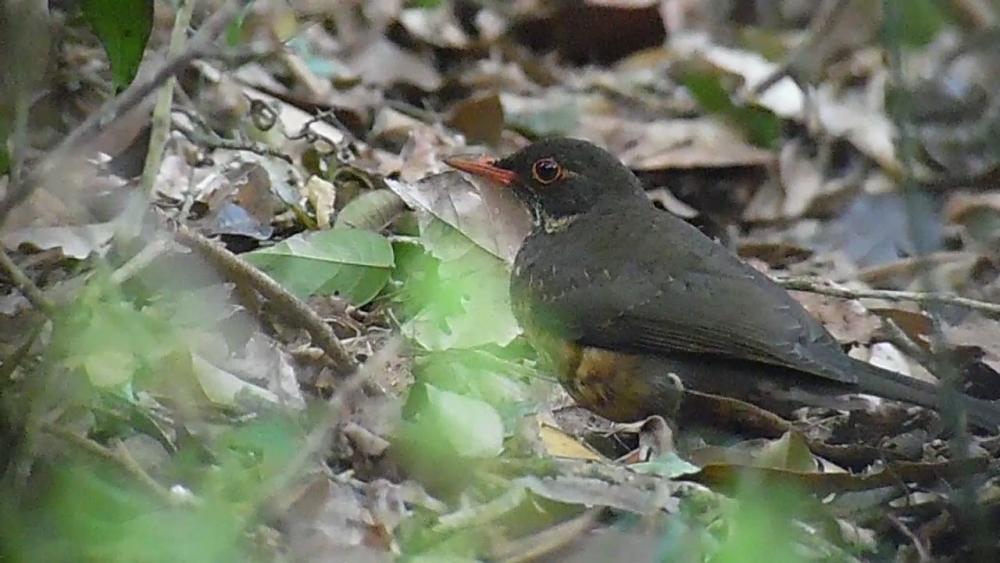Taita thrush
(Turdus helleri)

Description
Turdus helleri, commonly known as the Heller's Thrush, is a bird species that belongs to the family Turdidae. It is a small to medium-sized bird that inhabits the high altitude forests of Central and South America, including Costa Rica, Panama, and Colombia. In this article, we will explore in detail the taxonomy, physical characteristics, habitat, behavior, and conservation status of the Turdus helleri. Taxonomy The Turdus helleri was first described in 1907 by the American ornithologist Outram Bangs. It was named after the American naturalist and collector Edmund Heller. The species belongs to the genus Turdus, which is a large and diverse group of thrushes that are found throughout the world. The Heller's Thrush is classified as a member of the Turdidae family, which also includes other thrushes, such as the American Robin and the European Blackbird. Physical Characteristics The Heller's Thrush is a small to medium-sized bird that measures around 18 cm in length and weighs between 35 and 45 g. It has a distinctive olive-brown back and head, with a pale yellowish underbelly. The bird's wings and tail feathers are a darker brown, and it has a white eye-ring and a yellowish-brown bill. The male and female Heller's Thrushes look similar, but the male is slightly larger than the female. Habitat The Turdus helleri, or Heller's Thrush, inhabits the high altitude forests of Central and South America, including countries such as Costa Rica, Panama, and Colombia. It is most commonly found in the Montane forests of the Andes, but it can also be found in other high altitude forests. The bird is typically found in the upper canopy of trees in its forest habitat. However, its habitat is under threat from deforestation and climate change, which are causing the loss of its forest habitat. Behavior The Turdus helleri, or Heller's Thrush, is a shy and elusive bird that is often difficult to spot in the wild. It is mostly solitary, although it may occasionally be seen in small groups during the non-breeding season. The bird is known for its distinctive song, which is a series of short, sharp notes followed by a trill. The male bird performs a courtship display during the breeding season, which involves singing and fluffing up its feathers to attract a mate. The Heller's Thrush is primarily diurnal, meaning it is active during the day, and rests at night. It forages for food in the trees of its forest habitat, mainly in the upper canopy. The bird is also known to hop on the ground in search of food occasionally. During the breeding season, the female bird builds a cup-shaped nest out of grass and moss, which she lines with feathers and other soft materials. The female then lays a clutch of two to three eggs, which she incubates for around 14 days. Both the male and female birds take turns incubating the eggs and caring for the chicks. Overall, the Turdus helleri has a vital ecological role in its forest habitat by controlling insect populations and dispersing the seeds of the fruits it eats. However, the bird's habitat is under threat from deforestation and climate change, which are causing the loss of its forest habitat. Diet The Turdus helleri, or Heller's Thrush, feeds on a variety of food items, including insects, small fruits, and berries. It forages for its food in the trees of its forest habitat, mainly in the upper canopy. The bird's diet is mainly insectivorous, with insects such as beetles, caterpillars, and moths forming a significant portion of its diet. However, it also consumes small fruits and berries when they are available. The Heller's Thrush plays an essential ecological role in its forest habitat by helping to control insect populations and disperse the seeds of the fruits it eats. Conservation Status The Heller's Thrush is listed as a species of "Least Concern" by the International Union for Conservation of Nature (IUCN). This means that the bird is not currently at risk of extinction, but its habitat is under threat from deforestation and climate change. The bird's population is also affected by the illegal capture of birds for the pet trade, which is a significant threat to bird populations in Central and South America. In conclusion, the Turdus helleri, or Heller's Thrush, is a small to medium-sized bird that inhabits the high altitude forests of Central and South America. It is a shy and elusive bird that is difficult to spot in the wild, and its habitat is threatened by deforestation and climate change.
Taxonomic tree:







